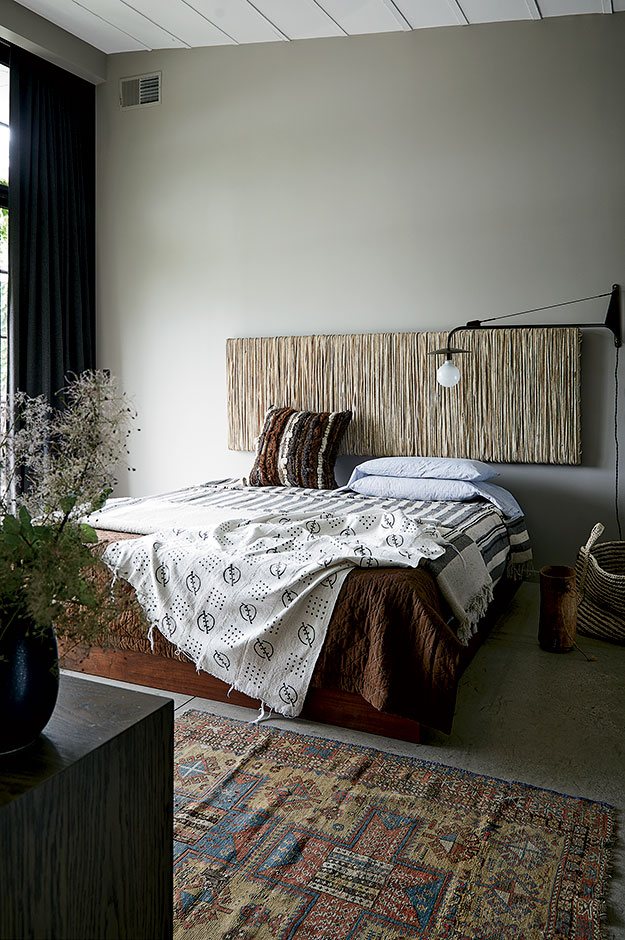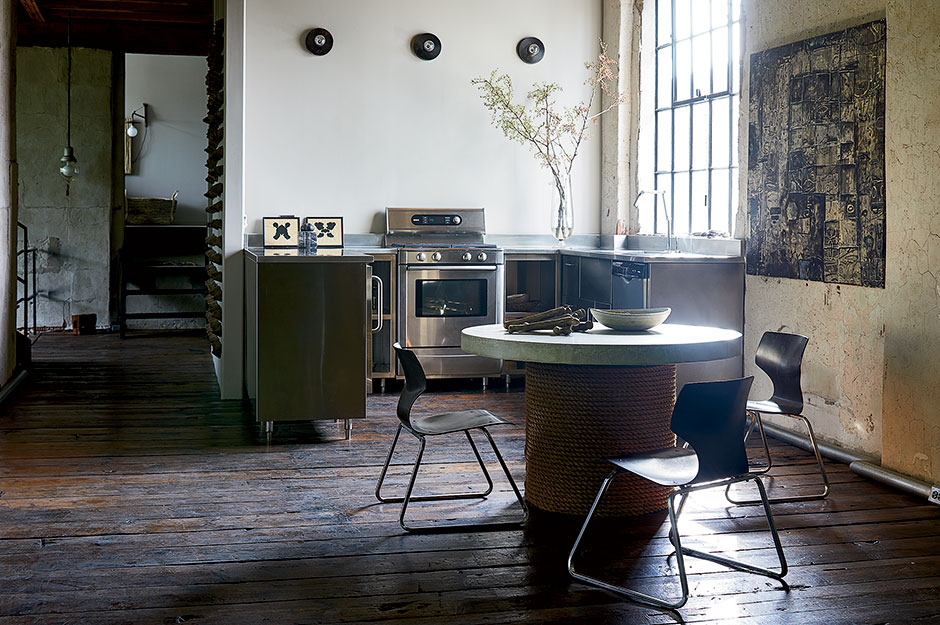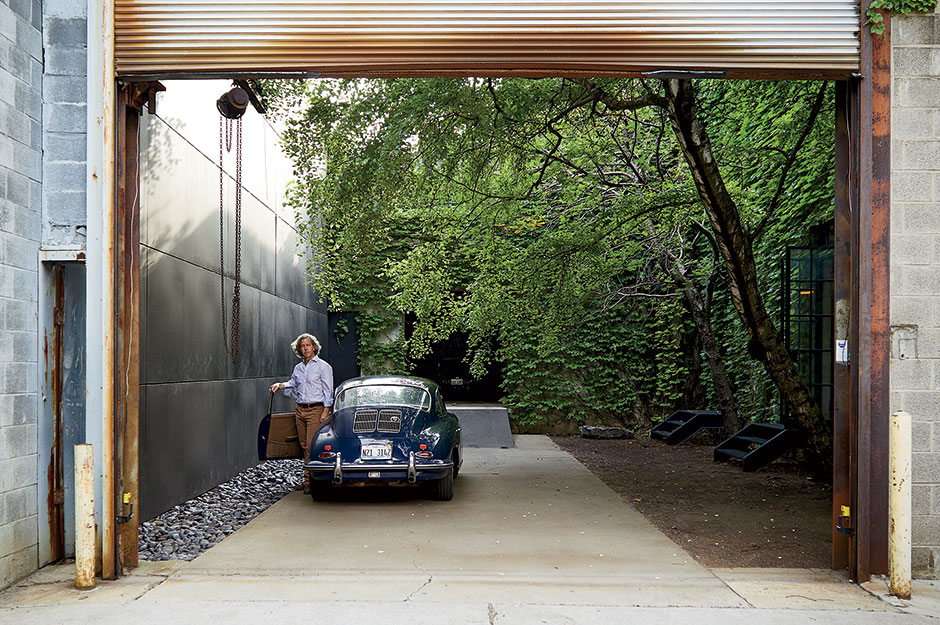Stuart Grannen is in the business of salvaging. An inveterate globetrotter, the 61-year-old antiques dealer scouts out undervalued finds on his travels and ships them back to Chicago, his home of 31 years. He sells the vast majority at Architectural Artifacts, his 80,000-square-foot Ravenswood warehouse that’s frequented by interior decorators and collectors with an astute eye. But on occasion, he will keep a piece he loves (like a leather pommel horse from the Czech Republic, which he’s transformed into a coffee table) and plant it in his bachelor pad: a former charcoal factory, built in the 1890s, on an industrial strip between Lincoln Park and Bucktown.
When Grannen bought the two-story building 15 years ago, it was raw and neglected, with firebrick walls and dirt floors on the ground level. But as with the many objects that populate his store, he saw the beauty in this property and reimagined it, working with architect Trish VanderBeke. “Giving something old a new life has always motivated me,” he says.
Now a hulking rolled-steel gate hides a 5,000-square-foot open-plan residence. It’s sparsely decorated, with earth-tone assemblages and painted canvases placed strategically on walls haphazardly coated in plaster or concrete. The austerity is intentional. Although Grannen is a collector, he’s also a ruthless editor. “I’m in the business of stuff, so I try not to get too attached to any of it,” he says. “I’m like the shoemaker’s kid who has no shoes.”
Grannen is no stranger to creating homes for himself in challenging spaces. He’s breathed life into an array of old structures: a midcentury wooden yacht in the Caribbean, an aging farmhouse in the Hamptons, a sprawling warehouse in Buenos Aires. Here, he enlisted interior design firm Michael Del Piero Good Design to create a space where he could host grand parties but also spend cool evenings cozied up by a hearth or summer days on an expansive deck. “The architecture was very strong, so my take on it was that it should be functional and minimal,” Del Piero says. “It couldn’t be too precious or too pretty.”
Fussy this home is not. That’s obvious as you pass through the glass and steel doors to the ground floor, now covered in troweled concrete. (There is another entrance off the cavernous garage, where eight of Grannen’s 19 cars — two of them vintage Porsches — sleep.) The lower level features little more than a wooden dining table, a few old chairs, and an eclectic collection of art. Animal motifs appear at every turn, from a vintage leather Abercrombie & Fitch rhinoceros to fabric monkeys tucked into nooks. Ancient spearheads play up the restrained, masculine mood, while a scattering of midcentury Dutch vessels and a pear-shaped sculpture made of entwined fir needles lend a subtle, softer touch.
Because Grannen lives alone and enjoys his solitude, the house’s sole shower sits at the top of the main staircase, in full view of any visitor (hooks in the ceiling can support a curtain, should he have guests). The sparse stainless steel bathroom beside it has just a washbasin and a toilet — designed to resemble one from, of all places, Cook County Jail. A short walk up three steps, the lone bedroom delivers a master class in minimalism: the only furniture here is a bed, embellished with a neutral headboard. Two mitered metal panels serve as the walls of a makeshift closet.
Despite its dark palette and spartan appearance, the house emanates a cosseting warmth — it’s more like a light box than a charcoal factory. The exposed beams and roughly plastered walls suggest handcrafting. The custom-made windows that span entire walls leave little need for artificial light in the daytime, especially when the oversize fireplace is lit. Its glow bathes the second floor in soothing ocher.
Outside, ivy nurtured over the years shrouds the building in green. The vines wrap the chimney and hang dramatically like curtains along the massive deck that extends from the bedroom. This wooden terrace is where Grannen spends most of his time at home. “I like that it’s hidden,” he says. “Up here, you really get a sense that you’re outside. And once you’re inside, you could be anywhere.”









